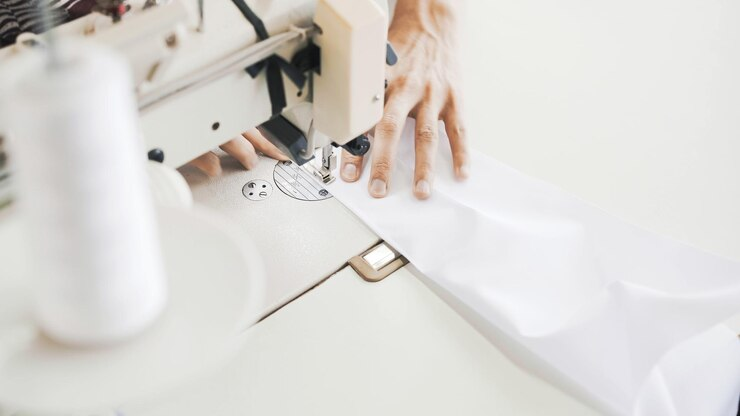
Whether you're launching a fashion brand or simply curious about how garments go from a sketch to store shelves, understanding the clothing production process reveals the intricate steps behind every piece we wear. From design ideation to manufacturing timelines, this guide walks you through each phase—so you can plan smarter, avoid costly delays, and bring your collection to life efficiently.
Fashion production is the end-to-end process of turning a designer's vision into a tangible product ready for consumers. It involves multiple stages, broadly categorized into pre-production (ideation, design, and sourcing), production (manufacturing and assembly), and post-production (quality control and distribution). Each phase requires meticulous planning to meet deadlines, maintain quality, and align with market demands. Timelines can vary widely depending on the scale of production, sourcing choices, and technological tools.
Every great garment starts with a strong idea. In this initial phase, designers translate creative visions into workable concepts by conducting trend research, analyzing competitor lines, and building mood boards.
Once the design direction is clear, color palettes and silhouettes are established. Most importantly, a technical package (tech pack) is developed. This blueprint includes garment sketches, measurements, material specs, and construction notes. A well-prepared tech pack is essential for clear communication with manufacturers and typically takes 1–2 weeks to finalize.
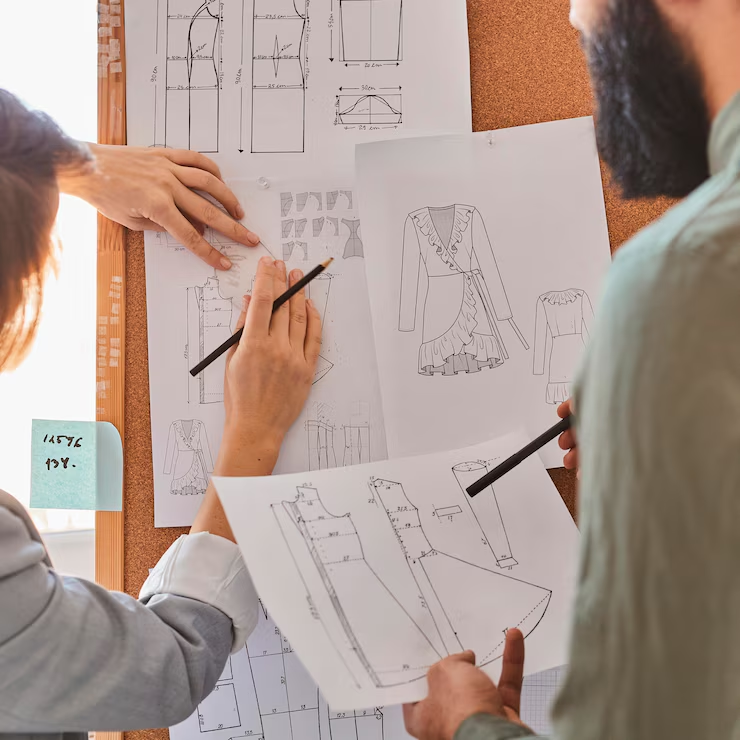
Next comes sampling—the stage where concepts take physical form. Pattern makers interpret the tech pack to draft the first patterns, which are then used to produce the initial garment sample.
This sample undergoes multiple fit tests and revisions to refine proportions, adjust functionality, and perfect aesthetic details. It's a back-and-forth process between designers and technicians, often requiring 2–4 weeks depending on complexity. At the end of this phase, the garment is production-ready in both form and function.
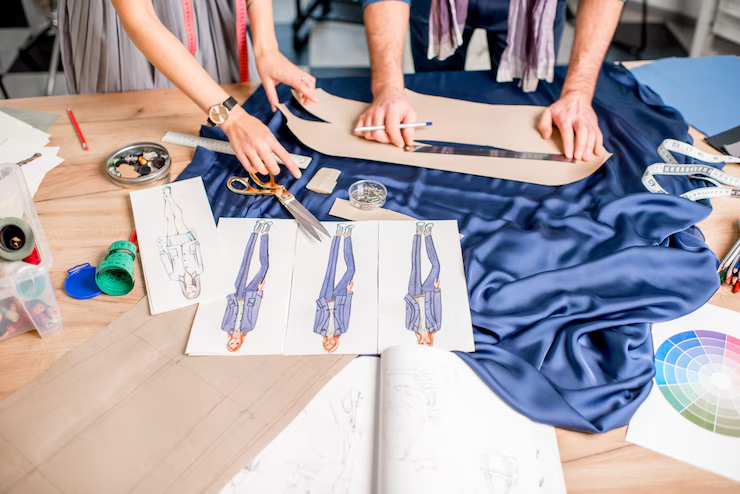
Sourcing involves selecting and securing fabrics, trims, zippers, labels, and any custom hardware. For those working with custom apparel suppliers, it's essential to ensure that material specs and delivery timelines are aligned early on—delays in material delivery can derail your entire production schedule.
Suppliers are contacted, minimum order quantities (MOQs) are reviewed, and sample yardage may be tested before final orders are placed. At the same time, factories are booked for pre-production planning, which includes small-batch test runs to validate quality and workflow. This phase usually takes 1–3 weeks, though custom material sourcing can take longer.
Now the real manufacturing begins. After materials are received and approved, production lines kick off the bulk process:
· Cutting: Fabrics are layered and precision-cut based on approved patterns.
· Sewing: Skilled operators or semi-automated machines stitch each garment.
· Finishing: Labels, tags, and final trims are applied.
Depending on volume and factory efficiency, manufacturing timelines can range from 2 to 8 weeks, with fast fashion brands often pushing for faster outputs. Fast fashion brands may push production through in 3–4 weeks, while luxury or made-to-order items often require longer lead times.
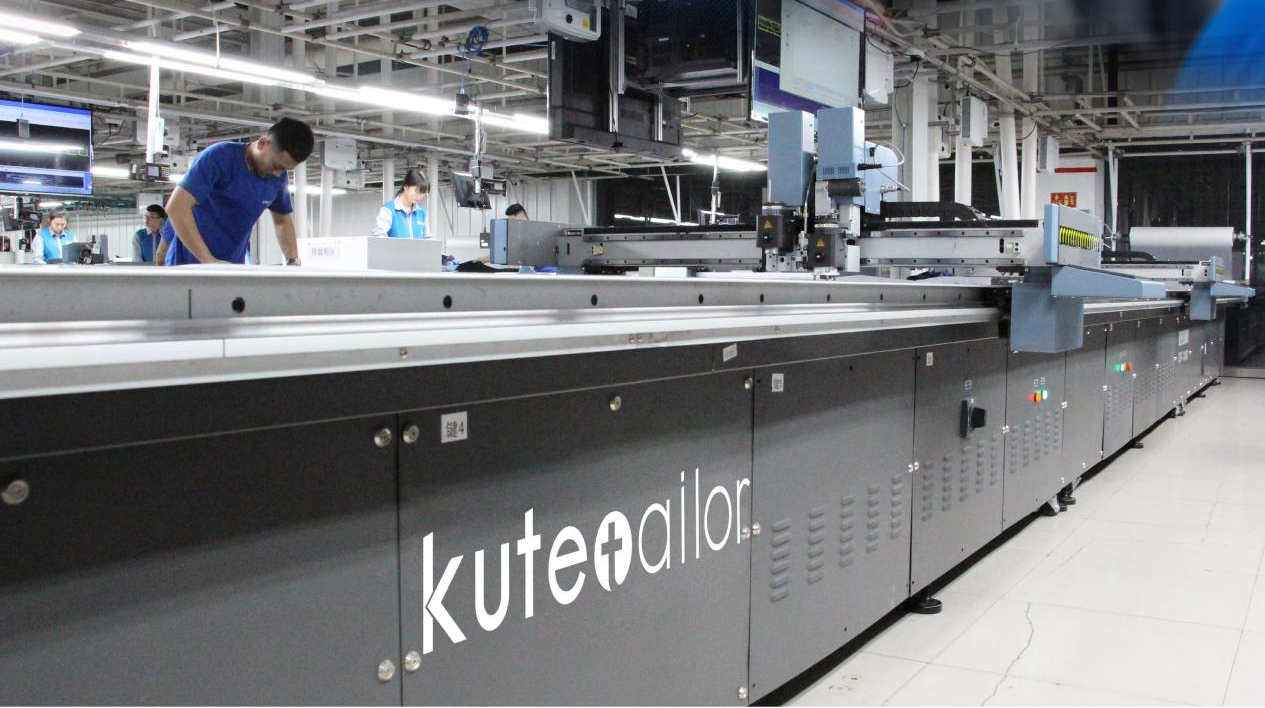
Quality control (QC) ensures that each garment meets your brand's standards. Factories conduct inspections at multiple stages—post-cutting, post-sewing, and before packaging. Garments are checked for sizing accuracy, stitching consistency, and material defects.
Finishing touches include ironing, packaging, and sometimes special treatments like soft washing or wrinkle resistance. QC is a critical safeguard, preventing defects from reaching customers and damaging your brand.
Once garments pass inspection, they are folded, tagged, and packed for shipment. Packaging design must balance aesthetics, durability, and sustainability.
Shipping logistics vary depending on destination and budget—options range from sea freight (slow, affordable) to air express (fast, expensive). Upon arrival at distribution centers or retail outlets, garments are prepped for sale, either online or in physical stores.
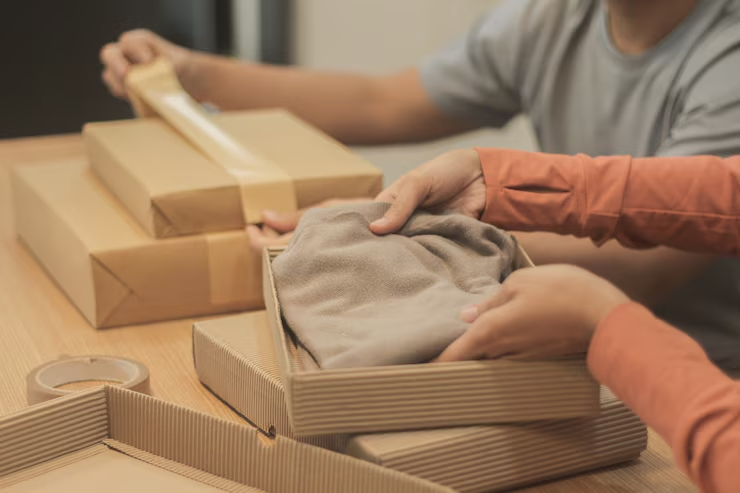
While fashion production timelines vary based on complexity and supplier location, here’s a general breakdown:
| Stage | Estimated Time |
| Design & Tech Pack | 1–2 weeks |
| Sampling & Fitting | 2–4 weeks |
| Sourcing & Pre-Production | 1–3 weeks |
| Bulk Manufacturing | 2–8 weeks |
| QC & Finishing | 1–2 weeks |
| Logistics & Distribution | 1–3 weeks |
In total, a production cycle can take 2 to 4 months—or longer for custom or luxury lines.
Timely production isn't just about getting products ready—it's a core part of your brand strategy. Delays can lead to missed seasonal launches, excess inventory, or loss of market momentum. Fast production supports trend responsiveness but often increases cost. Meanwhile, longer timelines may lower per-unit costs but require better forecasting and storage capacity. Balancing time and budget is crucial to brand success.
To navigate the complexities of clothing production, effective strategies can make all the difference:
· Comprehensive Planning: Create detailed production plans that outline each stage, from design to delivery, to keep the process on track.
· Reliable Partnerships: Collaborate with trusted suppliers and manufacturers to minimize delays and ensure quality.
· Leveraging Technology: Use digital tools like 3D design software or production management platforms to streamline workflows and reduce errors.
· Realistic Deadlines: Set achievable timelines with buffer periods to account for unexpected challenges, such as material shortages or production delays.
· Clear Communication: Maintain open lines of communication with all stakeholders—designers, suppliers, and factories—to ensure smooth handovers and quick problem-solving.
The clothing production process is a fascinating blend of creativity, logistics, and precision, with timelines typically ranging from 6 to 12 months. By understanding each stage—from ideation to distribution—aspiring designers and entrepreneurs can better navigate the complexities of fashion manufacturing. Embracing technology, building strong partnerships, and planning meticulously can streamline the process, helping bring collections to market efficiently. Whether you’re launching a new clothing line, offering made to measure clothes online, or simply curious about the industry, dive into the world of clothing development with confidence, and explore resources or consult professionals to turn your vision into reality.
FAQs
Q1: What is the typical clothing production process from start to finish?
A1: The clothing production process typically includes ideation, technical design, sourcing materials, sample making, bulk manufacturing, quality control, and distribution. Each stage plays a critical role in turning a concept into a market-ready product.
Q2: How long does the full clothing production timeline take?
A2: Production timelines can range from 2 to 6 months depending on design complexity, order volume, and supply chain efficiency. Fast fashion may take 4–6 weeks, while luxury or custom pieces may take much longer.
Q3: What affects manufacturing timelines in fashion production?
A3: Manufacturing timelines are influenced by fabric availability, factory capacity, the number of SKUs, and production method (e.g., made-to-order vs bulk). Planning ahead and maintaining strong supplier relationships can help prevent delays.